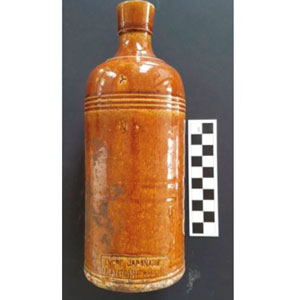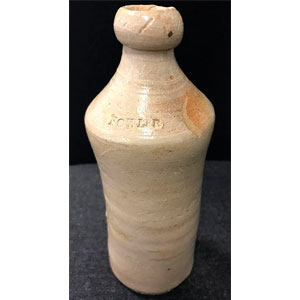Mary Searle Bell updates the largest civil contract project in the country, Auckland’s City Rail Link.
Auckland’s City Rail Link has a current budget of over $4.4 billion and is basically made up of a 3.45 kilometre twin-tunnel underground rail up to 42 metres below the Auckland city centre that is estimated to double the city’s rail network capacity with better links, by making the downtown Britomart Transport Centre a two-way through-station rather than the dead-end it currently is, and a few more stations.
The project includes redeveloping Mount Eden Station, where the CRL connects with the North Auckland (Western) Line, and new underground stations at Wellesley and Victoria Streets (Aotea Station), and at Beresford Square and Mercury Lane (Karangahape Station). The new line will also allow a new service travelling from west to south that bypasses the city centre.
The project is being delivered by the Link Alliance, made up of City Rail Link (CRLL), which is a company set up by Auckland Council and the government to fund and deliver the project; Vinci Construction Grands Projets S.A.S, Downer, Soletanche Bachy International, WSP Opus, AECOM, and Tonkin and Taylor.
Over the past three-and-a-half years many kilometres of stormwater, electrical, gas, sewerage and internet lines have been relocated or strengthened in two ECI (Early Contractor Involvement) contracts.
Contract 1, awarded to Downer NZ and Soletanche Bachy (DSBJV), included the underpinning of the historic former Chief Post Office building, to allow the construction of the rail tunnels beneath, along with reinstating Britomart Station and upgrading urban space and surrounding roads.
Contract 2, awarded to Connectus (McConnell Dowell and Downer JV), started in December 2015 with the relocation of a major stormwater line in Albert Street between Swanson and Wellesley Streets, and strengthening and bridging a section of the Orakei Sewer Main at the intersection of Victoria and Albert streets.

A total of 2500 tonnes of steel bar reinforcement have been tied together and over 10,000 cubic metres of concrete poured to complete the tunnel under the northern end of Albert Street, which links the CRL to the lower Queen Street/Britomart station construction site.
The concrete pours for the tunnels at Britomart will continue until next month (October 2019), and above ground works will also start.
In lower Albert Street, work is shifting above ground, where enhancement works will include wider footpaths, open places, and tree plantings.
At the completion of the Albert Street tunnel, CRLL chief executive Dr Sean Sweeney acknowledged the work of the contractors.
In July of this year details around the biggest stage of construction were released that includes extending the twin rail tunnel from Albert Street further south to Mt Eden, construction of the new underground stations. and the upgrade of the existing Mt Eden Station, which will remain closed for four years.
Works for the Aotea Station and tunnel will be delivered in three phases: Phase one features early works; phase two will see the main works completed, including construction of the station; and finally, in phase three, landscaping and public realm improvement work will take place.
This month (September), the construction team began phase one by locating and shifting utilities, as well as removing canopies from buildings to create space for piling works.
The main works to extend the tunnels to Mayoral Drive are expected to start in the first quarter of 2020. The cut and cover tunnel will include extensive station excavations along Albert Street.
The entire project is scheduled to be completed in 2024.

Construction methodologies
Construction of the tunnels will be done using three different methods; tunnel boring machine (TBM), traditional mining, and the cut and cover method.
Cut and cover will be used near Mt Eden station where the underground tunnels need to rise to the surface to meet the existing Western line.
Most of the cut and cover tunnel will be constructed using the ‘top down’ method, involving installing the side walls (piles or d-wall) and excavating to lay the station roof, enclosing the work site. This will enable the alliance to re-open parts of the road earlier and minimise some of the construction effects on nearby businesses and residents while excavation of the tunnel and station continues underneath.
This method has been used along Albert Street where it was too shallow for a TBM and there are utilities running down its length.
A TBM, about seven metres in diameter, is planned to start the first of its two drives from Mt Eden to Mayoral Drive in early 2021, installing a permanent lining of precast concrete segments as it goes. The main construction area will be at the southern end of the project adjacent to New North Road. The tunnel will be bored from this end to Mayoral Drive, the equipment dismantled and returned to the start for the second tunnel bore. Spoil from the tunnels will be removed from the Eden Terrace end.
Smaller TBMs have already been used to install a new stormwater pipe under Albert Street and divert an existing stormwater pipe at Mt Eden.
Traditional mining involving excavators and road headers, bolting machines and shotcrete will be employed for the underground caverns where the tunnels bifurcate to join the Western Line and the platforms at Karangahape Station.
Unusual discoveries
Ancient tree fragments found
In March 2019, machine tunneling around Eden Terrace/Mt Eden encountered an ‘ancient’ tree, at first guess possibly 30,000-40,000 years old.
It was found at 15 metres deep as excavation entered the basalt area, which indicated that it had been knocked over at the edge of a basalt flow and smothered by the lava rather than catch on fire.
Wharf piles found
Excavation works, in September 2018, within Lower Queen Street uncovered remnant piles and basalt blocks from the original Queen Street wharf dating to the 1850s. Some of the piles recovered showed a tapered point that retained the scallop marks produced by shaping with an adze.
Old tram tracks discovered
In January 2016, working through layers of power and telecommunications services, construction workers came across an unexpected piece of Auckland’s transport history – a section of the city’s old tramway network in Victoria Street West that connected back to Customs Street.
Artefacts unearthed
A range of historic artefacts have been unearthed during construction works. These include glass and stoneware bottles dating from the 19th century.
Of particular note is a torpedo-shaped bottle from the mid to late 19th century bearing the name Pochajee Framjee & Co, a company of shopkeepers and wine merchants in Bombay, India in 1842. It is considered a rare find.
A French stoneware ink bottle, produced by Antoine & Sons, was another exciting find. The Paris-based House of Antoine was best known as makers of copying ink, which was first marketed as ‘Encres Japonaise’ in 1853.
A hand-thrown stoneware ginger beer bottle bearing the maker’s mark, Fowler, was also found. The project archaeologist was able to trace this artefact back to Enoch Fowler, who arrived in Sydney in 1836 as a free settler from Tyrone, Ireland, and made ginger beer bottles and kitchenware.



